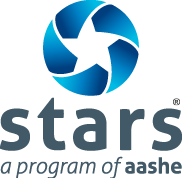| Overall Rating | Gold - expired |
|---|---|
| Overall Score | 67.94 |
| Liaison | Bert Jacobson |
| Submission Date | Feb. 3, 2015 |
| Executive Letter | Download |
Kankakee Community College
OP-26: Water Use
| Status | Score | Responsible Party |
|---|---|---|

|
1.39 / 2.00 |
Bert
Jacobson Dean, Environmental and Institutional Sustainability Environmental and Institutional Sustainability |
Level of water risk for the institution’s main campus:
Total water use (potable and non-potable combined)::
| Performance Year | Baseline Year | |
| Total water use | 64,568 Gallons | 73,685 Gallons |
Potable water use::
| Performance Year | Baseline Year | |
| Potable water use | 64,568 Gallons | 73,685 Gallons |
Figures needed to determine "Weighted Campus Users"::
| Performance Year | Baseline Year | |
| Number of residential students | 0 | 0 |
| Number of residential employees | 0 | 0 |
| Number of in-patient hospital beds | 0 | 0 |
| Full-time equivalent enrollment | 5,171 | 4,677 |
| Full-time equivalent of employees | 424 | 335 |
| Full-time equivalent of distance education students | 100 | 0 |
Gross floor area of building space::
| Performance Year | Baseline Year | |
| Gross floor area | 320,537 Square feet | 320,537 Square feet |
Area of vegetated grounds::
| Performance Year | Baseline Year | |
| Vegetated grounds | 63 Acres | 44.60 Acres |
Start and end dates of the performance year and baseline year (or three-year periods):
| Start Date | End Date | |
| Performance Year | July 1, 2011 | June 30, 2012 |
| Baseline Year | July 1, 2007 | June 30, 2008 |
A brief description of when and why the water use baseline was adopted:
The water use baseline was adopted for this STARS survey because it was the most reliable data available at this time.
Water recycled/reused on campus, performance year:
Recycled/reused water withdrawn from off-campus sources, performance year:
A brief description of any water recovery and reuse systems employed by the institution:
None
A brief description of any water metering and management systems employed by the institution:
The water for the main campus is metered with two meters.
A brief description of any building retrofit practices employed by the institution, e.g. to install high efficiency plumbing fixtures and fittings:
All new construction and renovations include water sparing faucets and low-flow and dual flush toilets.
A brief description of any policies or programs employed by the institution to replace appliances, equipment and systems with water-efficient alternatives:
In addition to the renovations listed above, the Master Plan includes provisions for water-efficient replacements for the aging boilers and deferred maintenance provisions for more water sparing fixtures.
A brief description of any water-efficient landscape design practices employed by the institution (e.g. xeriscaping):
Native plantings as part of an overall Conservation Plan.
A brief description of any weather-informed irrigation technologies employed by the institution:
A brief description of other water conservation and efficiency strategies employed by the institution:
The website URL where information about the institution’s water conservation and efficiency initiatives is available:
Data source(s) and notes about the submission:
The information presented here is self-reported. While AASHE staff review portions of all STARS reports and institutions are welcome to seek additional forms of review, the data in STARS reports are not verified by AASHE. If you believe any of this information is erroneous or inconsistent with credit criteria, please review the process for inquiring about the information reported by an institution or simply email your inquiry to stars@aashe.org.
